What we've learned from the Jan. 6 committee hearings
The House panel, in a dramatic moment, voted to subpoena Donald Trump.
This story is part of the ABC News series "Democracy in Peril," which examines the inflection point the country faces after the Jan. 6 attacks and ahead of the 2022 election.
After more than a year of investigation, the House select committee examining the Jan. 6, 2021, attack on the U.S. Capitol is concluding its work.
The panel will hold its last public meeting on Monday, during which members will consider criminal referrals and vote on a final report.
"What you will see with this report, and everything included, is a fulsome picture," Rep. Adam Kinzinger, one of two Republican members of the committee, previously told ABC's "This Week."
"This is all about telling the American people about what happened and leaving with them the opportunity to say, democracies can have bad days, but how we come back from those bad days is how we'll be defined," Kinzinger said.
In its most recent hearing, in mid-October, the committee unanimously voted to subpoena former President Donald Trump, who members have said was at the center of the failed plot to overturn the 2020 presidential election.
Since then, the committee has held several more interviews with those in Trump's orbit at the time of the attack.
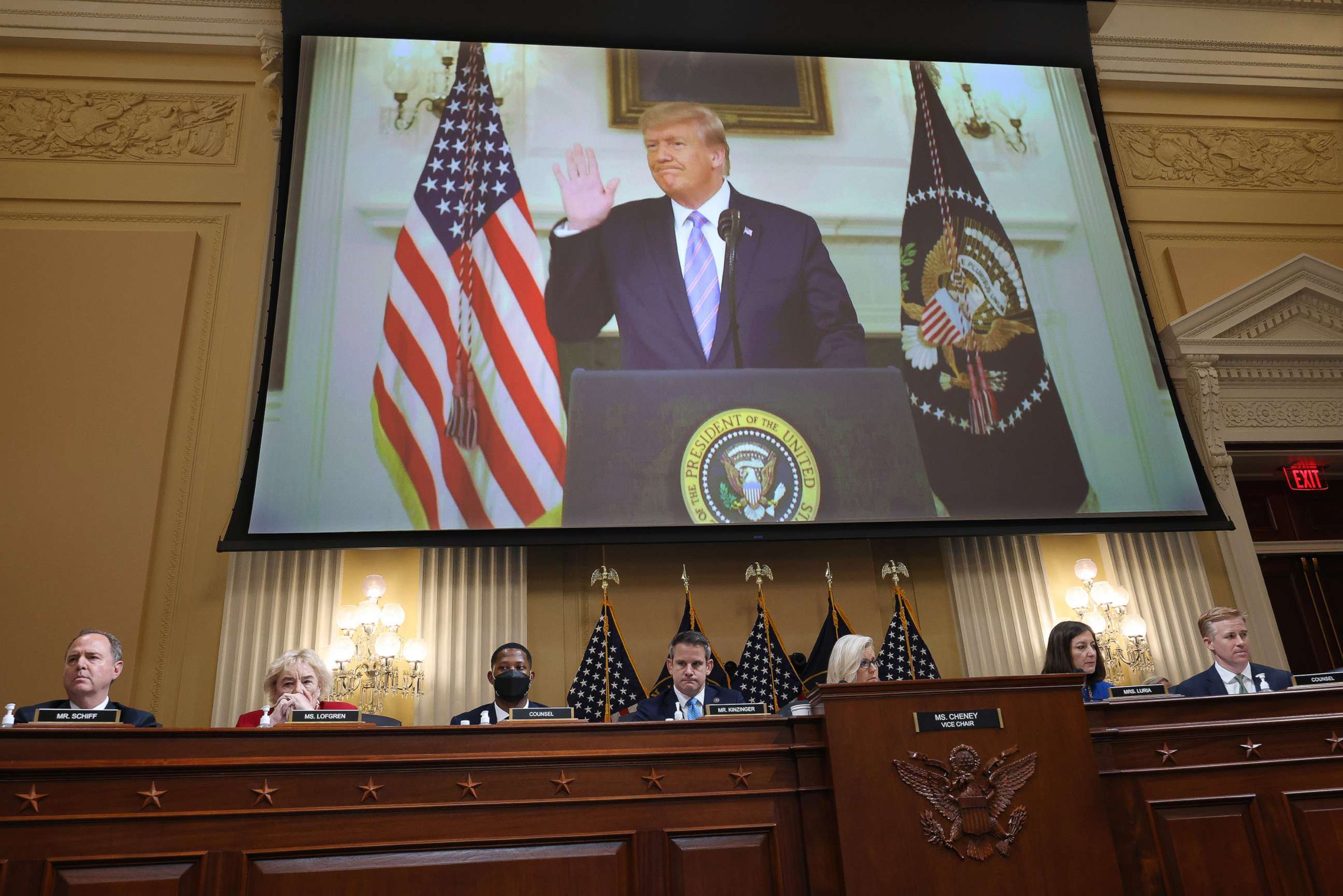
Former White House deputy chief of staff for operations and top Secret Service official Tony Ornato met with the committee in late November. Ornato was at the center of testimony given by Cassidy Hutchinson, who told the committee in a televised hearing that Ornato told her Trump had a physical confrontation with his Secret Service detail in the president's vehicle on Jan. 6.
Wisconsin Assembly Speaker Robin Vos and former Trump White House aide Kellyanne Conway also have met with the committee since its last public meeting.
Meanwhile, Trump sued to block the Jan. 6 committee's subpoena, which demanded documents and testimony. Chairman Bennie Thompson, D-Miss., told reporters the panel was looking at paths forward after Trump's lawsuit but it hadn't taken any action in court.
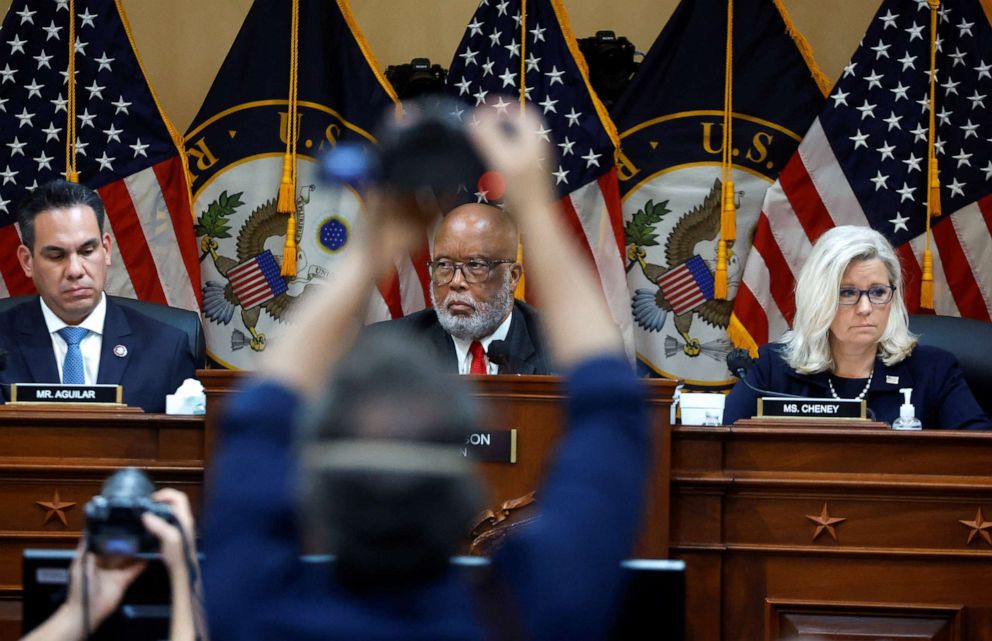
Trump, and many of his Republican allies, have sought to discredit the committee and the witnesses who've appeared for public testimony. Republican Rep. Kevin McCarthy, running for House speaker, has indicated the House GOP will investigate the committee's work.
While the House select committee will be disbanded at the end of the year, Jan. 6-related investigations will continue. Attorney General Merrick Garland named longtime federal prosecutor Jack Smith as special counsel to oversee key aspects of Jan. 6 cases.
Here are highlights of what we've learned from the House select committee so far:
Trump was repeatedly told he lost the election, witnesses testified
Using taped depositions from Trump officials at the time -- including Attorney General Bill Barr, White House counsel Pat Cipollone and Trump's daughter Ivanka -- the panel argued the former president was "well aware" that he lost the election yet still moved forward with an illegal plot to stay in office.
Barr said he told Trump many times there was no fraud sufficient to overturn the results.
At one point, Barr testified, when Trump was pushing a baseless conspiracy about Dominion voting machines, he said, "I thought, boy, if he really believes this stuff, he has lost contact with -- he's become detached from reality."
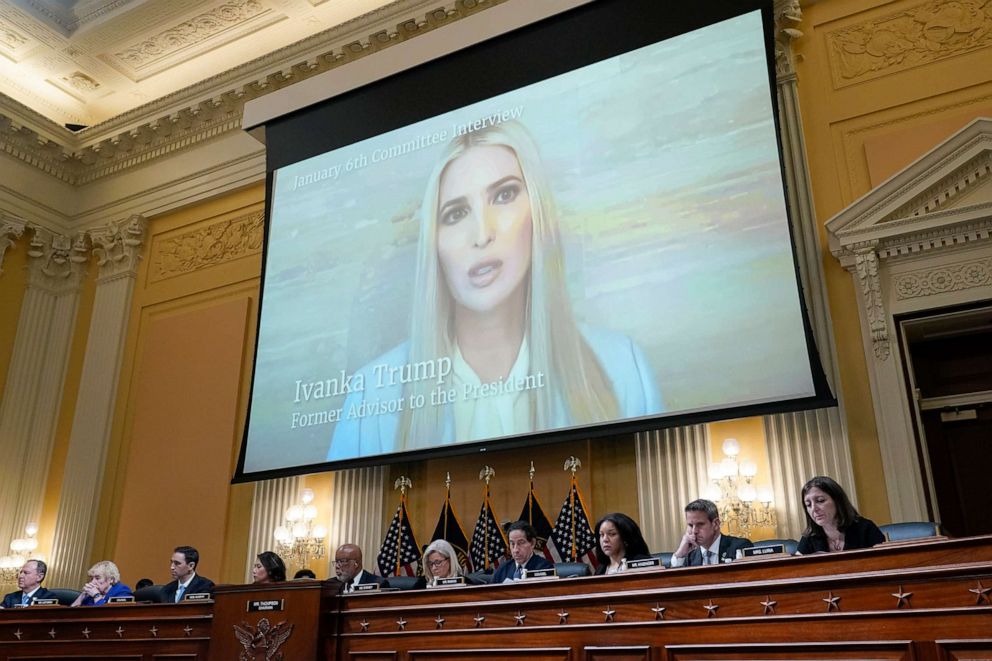
Despite this, Trump continued to raise money for his post-election strategy. But according to the committee, little of the $250 million raised by Trump for his court battles actually went to his legal defense.
Four days after the electors across the country met to make Biden the president-elect, witnesses testified about a chaotic meeting took place on Dec. 18 in the Oval Office. Sidney Powell, former Overstock.com CEO Patrick Byrne and former national security adviser Ret. Gen. Michael Flynn -- Trump allies who promoted his false election claims -- spoke with Trump alone for 10-15 minutes before White House officials learned of the meeting and made their way to join.
The two camps divulged into screaming matches, witnesses testified. Text messages aired by the committee showed Hutchinson telling Tony Ornato, then-White House deputy chief of staff for operations, that "the West Wing is unhinged."
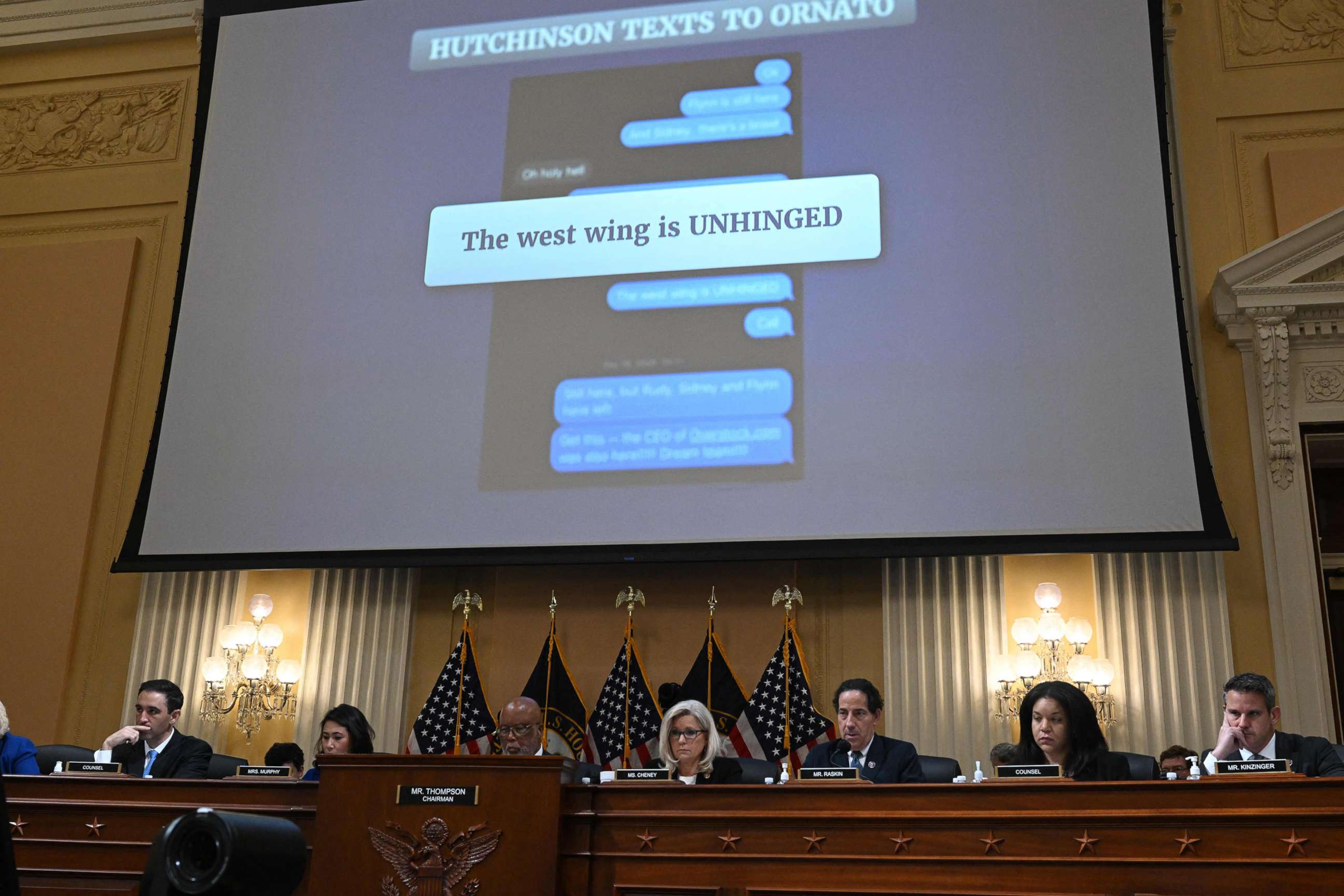
Trump was directly involved in pressure campaign to reverse the results, committee says
The panel laid out evidence that Trump himself was directly involved in pressure campaigns to reverse his loss.
Ronna McDaniel, chair of the Republican National Committee, told the panel in a deposition that Trump called her to discuss plans for an "alternate" slate of electors who would claim Trump actually won.
Former Justice Department officials testified about Trump's pressure on them to find evidence of fraud and to encourage states to send different, "fake" electors. Richard Donoghue, the acting deputy attorney general at the time, said Trump asked the agency to seize voting machines among other requests.
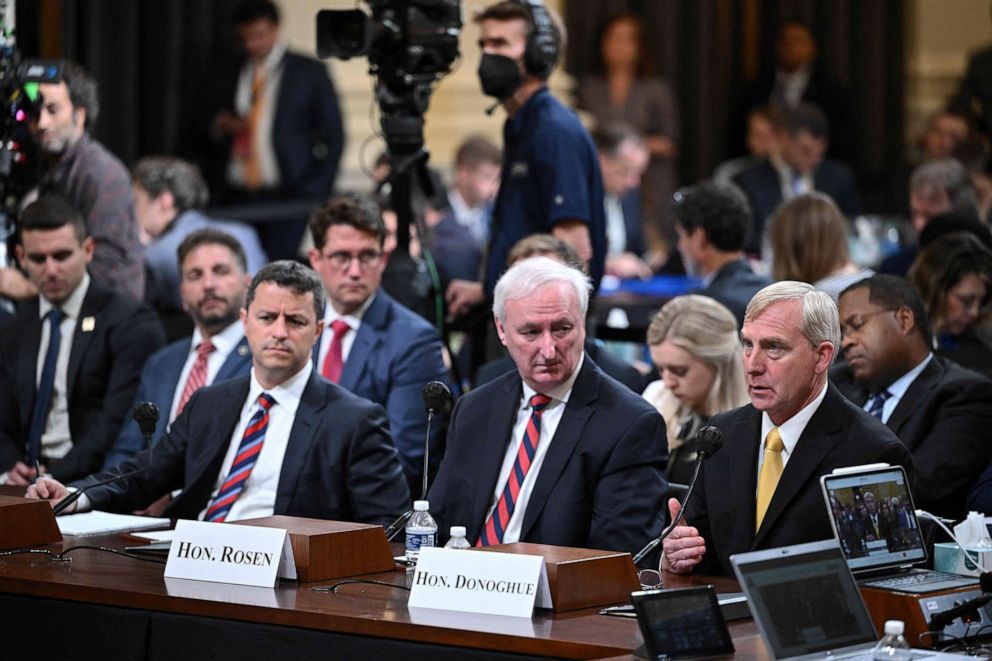
When they refused, they testified, Trump became "agitated" and threatened to remove them from their positions. One man he considered appointing to acting attorney general was Jeffrey Clark, a less qualified but loyal official who was leading the department's environmental division and who was prepared to send letters to state leaders alleging the department had real concerns about fraud.
The situation came to a head in a Jan. 3, 2021, meeting when Trump asked what he had to lose if he appointed Clark. White House counsel Cipollone, it was said, stepped in to describe appointing Clark as a "murder-suicide pact."
Local election officials testified about the impact of Trump's campaign to overturn election results. One Republican official from Arizona teared up as he described the pressure placed on him to break his oath to the Constitution, and a mother-daughter duo described how being the target of a Trump tweet upended their lives and careers.
Trump 'summoned the mob' to Washington, the committee says
The panel highlighted a Twitter post sent by Trump at nearly 2 a.m. on Dec. 19, 2020, to his millions of followers they say was a call to action. The social media post happened hours after the chaotic meeting in the Oval Office between Trump officials and outside advisers like Powell who wanted to overturn the election.
"Big protest in D.C. on January 6th. Be there, will be wild!" Trump's tweet read.
The reaction from his supporters, including right-wing media personalities, was enthusiastic, the panel showed. Infowars host and conspiracy theorist Alex Jones said it was "the most important call to action on domestic soil since Paul Revere and his ride in 1776" while one YouTuber said a "red wedding" -- a Game of Thrones reference about a slaughter -- was going to happen.
The committee said Trump's tweets and statements motivated far-right and militant groups like the Proud Boys and Oath Keepers to take action.
Donell Harvin, former D.C. homeland security chief, said in a deposition these usually "non-aligned groups were aligning, and all the red flags went up at that point."
Jason Van Tatenhove, the former spokesperson for the Oath Keepers, testified it was "exceedingly lucky that more bloodshed did not happen."
Trump knew crowd was armed when he told them to march on the Capitol, witness testifies
Hutchinson, a top aide to former White House chief of staff Mark Meadows, testified that Trump wanted more people to be admitted to his Ellipse rally but was warned by a Secret Service official that protesters kept outside security magnetometers were armed.
Trump's response, she said, was something to the effect of: "I don't 'effing' care that they have weapons. They're not here to hurt me. Take the 'effing' mags away. Let my people in."

The panel said law enforcement recordings described some protesters were seen carrying AR-15-style rifles, bear spray, body armor and flagpoles with knives attached to them.
The march to the Capitol was planned, the committee asserts
Despite claims that Trump's call for rally-goers to march to the Capitol was spontaneous, the committee laid out evidence suggesting that may not have been the case.
Obtained from the National Archives, an undated draft tweet showed Trump planned to alert his Twitter followers of the march.
"I will be making a Big Speech at 10AM on January 6th at the Ellipse... Please arrive early, massive crowds expected. March to the Capitol after. Stop the Steal!!," the draft tweet read. A stamp on the document indicated that it was approved by the president himself.
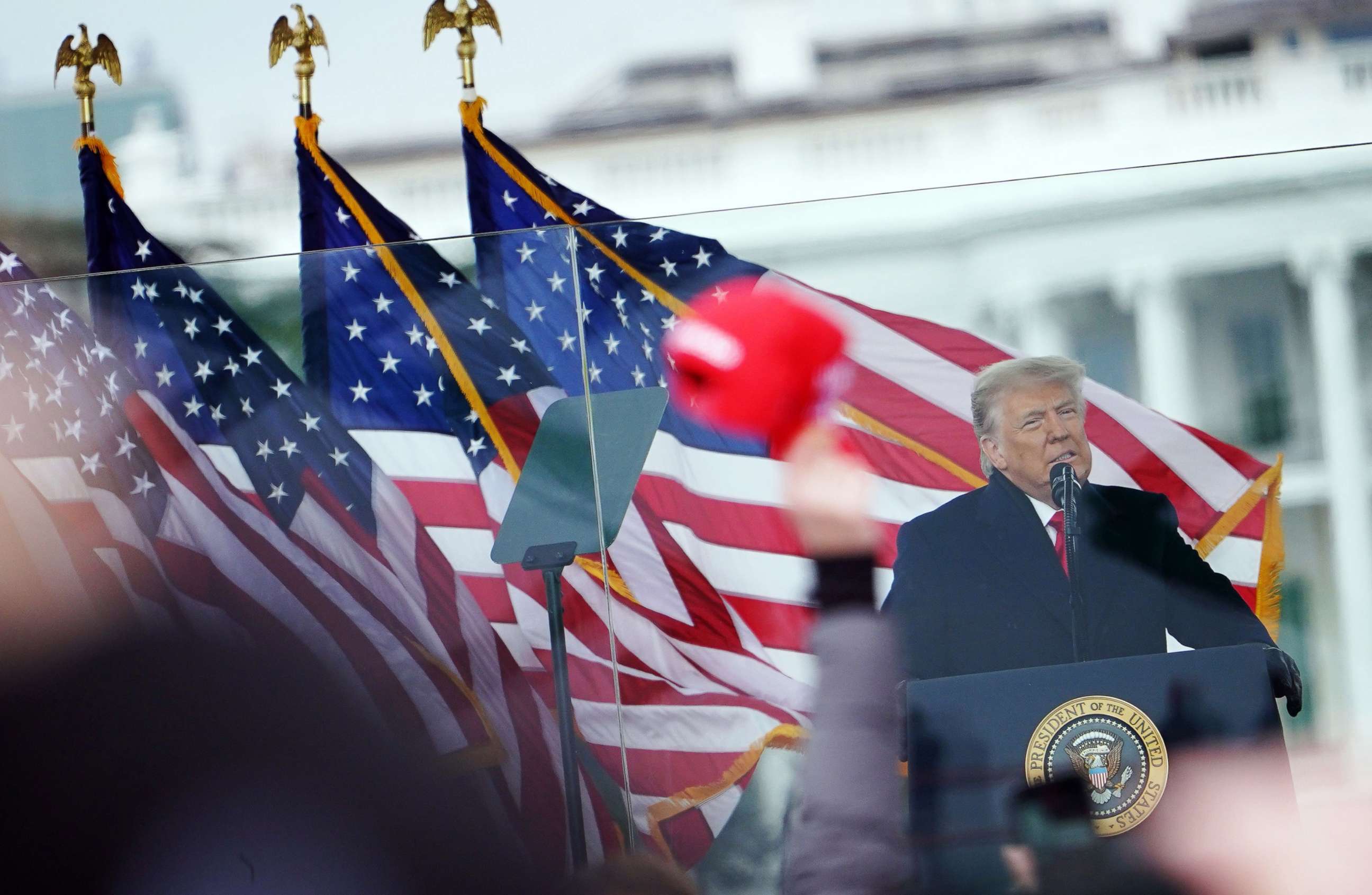
The panel also displayed a text exchange from Jan. 4, 2021, between White House Ellipse rally organizer Kylie Kremer and MyPillow CEO Mike Lindell in which they discussed plans to go the Capitol.
"This stays only between us, we are having a second stage at the Supreme Court again after the ellipse. POTUS is going to have us march there/the Capitol," Kremer wrote. "It cannot get out about the second stage because people will try and set up another and Sabotage it. It can also not get out about the march because I will be in trouble with the national park service and all the agencies but POTUS is going to just call for it 'unexpectedly.'"
Trump also planned on joining them, officials testified. Hutchinson testified top Secret Service official and White House deputy chief of operations Tony Ornato told her of a physical altercation inside the presidential vehicle when Trump was told he could not go and tried to grab the steering wheel.
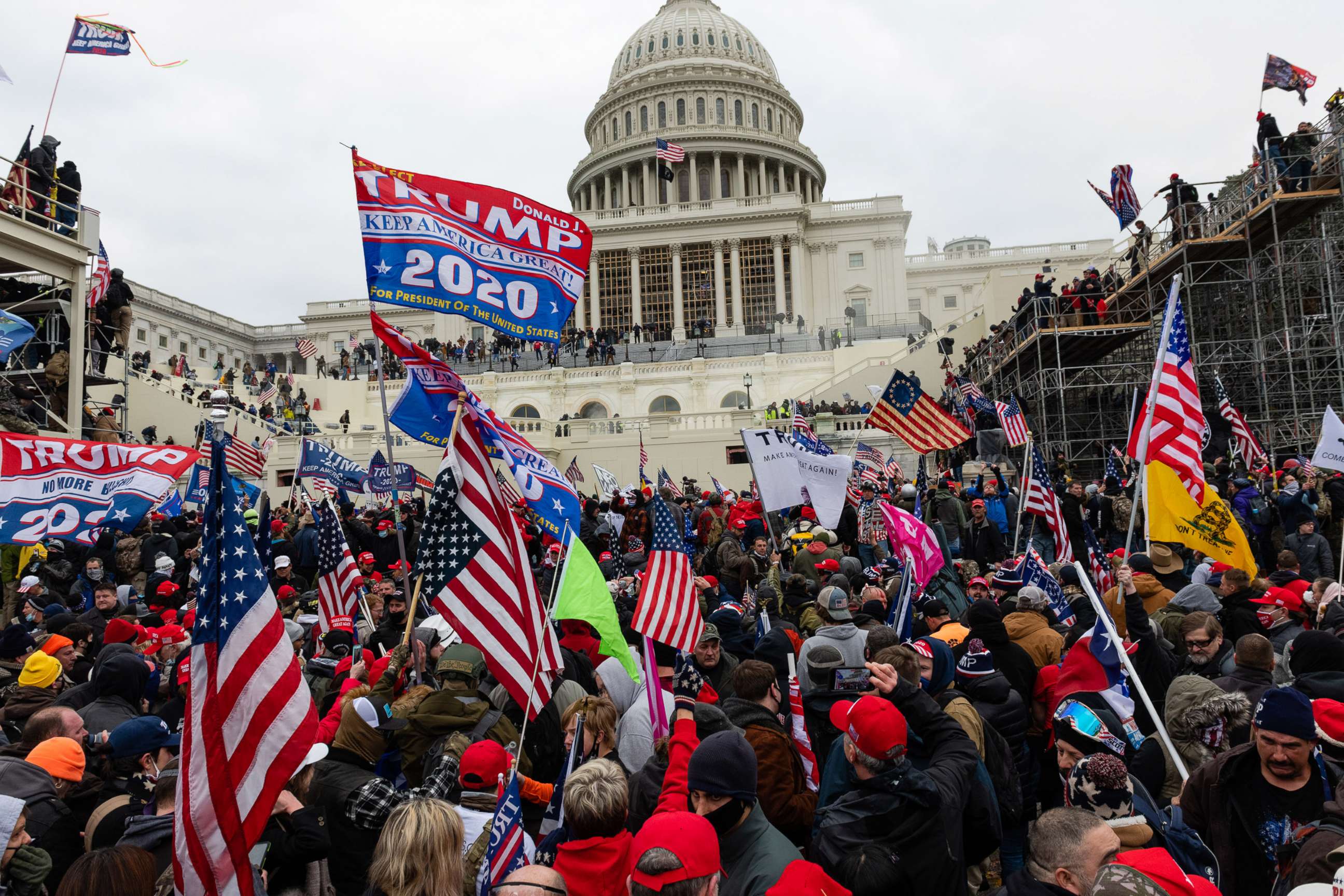
How close the mob got to Pence
The committee provided a never-before-seen photograph of a "heated" phone call between Trump and Vice President Mike Pence on the morning of Jan. 6, 2021. Hours later, Pence rejected Trump's demands to unilaterally reject Biden's electoral victory at the joint session of Congress.
New photographs were also shown of Pence and his family hiding in an underground location at the Capitol complex during the riot. They stayed at the location for more than four hours until Pence returned to preside over congressional certification of the electoral vote count.
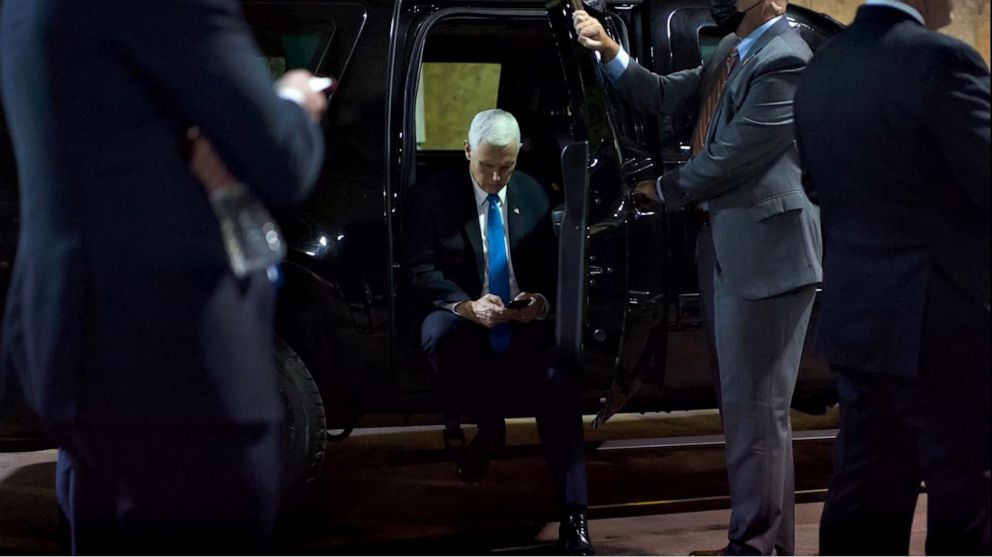
"Approximately 40 feet, that's all there was, 40 feet between the vice president and the mob," said Rep. Pete Aguilar, D-Calif., of how close Trump's violent supporters came to Pence as he tried to escape from the Capitol.
When asked about the mob chanting "Hang Mike Pence," Meadows said of Trump, "He thinks Mike deserves it," Hutchinson testified she overheard. Trump responded to her account indirectly by claiming he "never" said "Hang Mike Pence."
Trump tweeted about Pence knowing the mob was inside the Capitol, witnesses said
An incendiary tweet from Trump about his vice president amid the riot was a pivotal moment for witnesses at Thursday's hearing. The tweet, sent at 2:24 p.m. at the height of the violence, said Pence "didn't have the courage to do what should have been done."
Then-White House deputy press secretary Sarah Matthews said she thought the tweet "was the last thing that was needed in that moment" from Trump.
"He should have been telling these people to go home, and to leave, and to condemn the violence that we were seeing," she said. "For him to tweet out the message about Mike Pence, it was him pouring gasoline on the fire, and making it much worse."
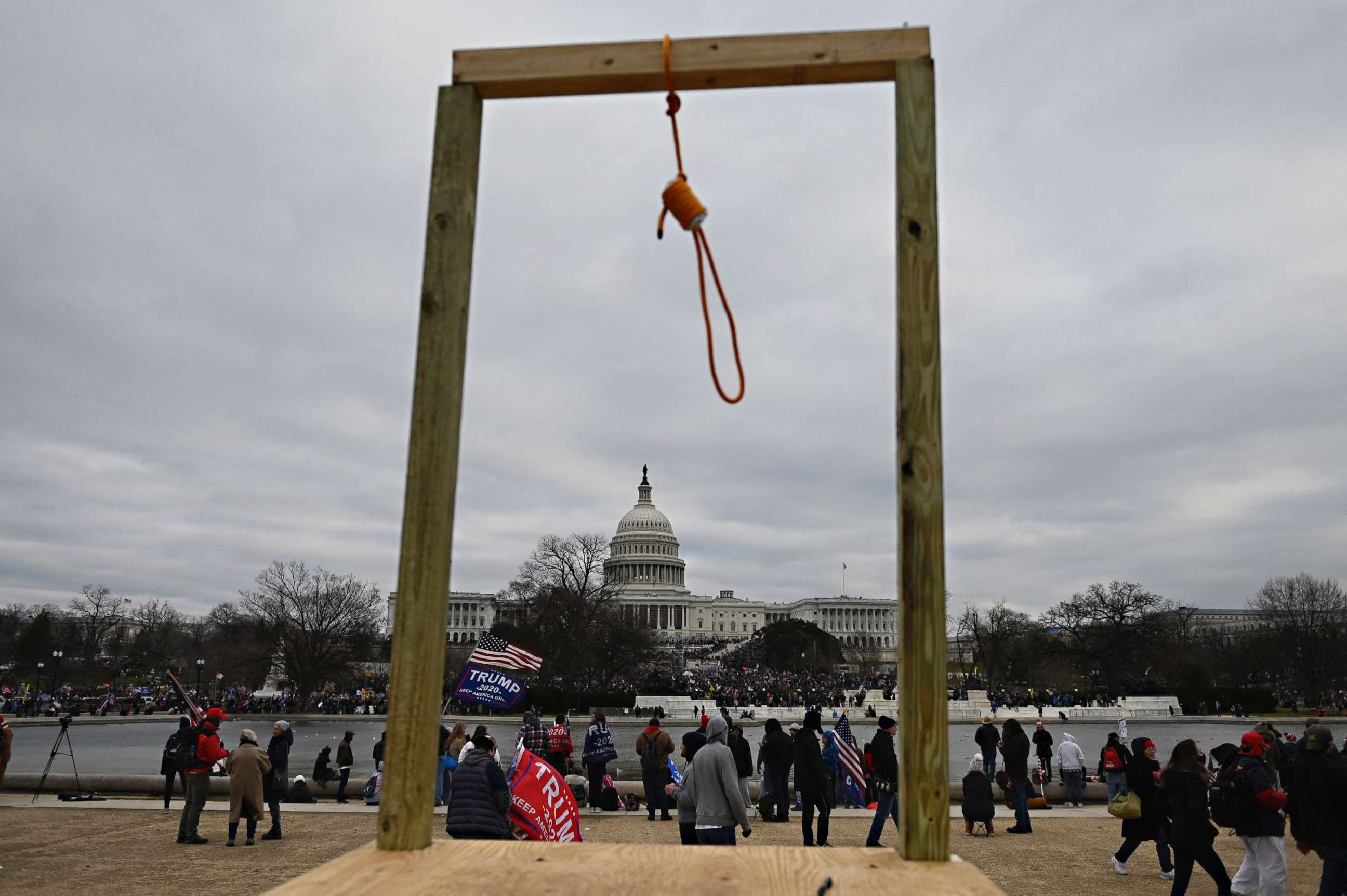
Republicans sought pardons, witness says
Testimony revealed how several Republican members of Congress sought pardons in the final days of the Trump administration.
Among those listed by witnesses were Reps. Scott Perry of Pennsylvania, Mo Brooks of Alabama, Andy Biggs of Arizona, Matt Gaetz of Florida, Marjorie Taylor Greene of Georgia and Louie Gohmert of Texas.
One after another, Republican lawmakers dismissed or denied the allegations.
John McEntee, a former Trump White House aide, testified that, at one point, the idea of a "blanket pardon" was floated for everyone involved in Jan. 6.
Cheney, one of two Republican lawmakers on the committee, had a message for her GOP colleagues who continue to support Trump's lies about the 2020 election: "There will come a day when Donald Trump is gone. But your dishonor will remain."
Committee details 187 minutes of Trump 'inaction'
In its prime-time public hearing on July 21, lawmakers laid out -- moment-by-moment -- the 187 minutes between Trump's rally at the Ellipse and his finally, grudgingly telling his violent supporters to "go home."
Witness after witness testified how he told his supporters to march on the Capitol after being told some were armed -- and then, back at the White House, watched the attack unfold on TV from his dining room, doing nothing, refusing pleas from top aides to call off the mob.
"President Trump didn't fail to act, he chose not to act," GOP Rep. Adam Kinzinger said, arguing Trump wanted the assault to succeed as the last desperate act in his plot to overturn the election. "A supreme violation of his oath of office," Kinzinger said, and "a complete dereliction of his duty to our nation."

Cheney, the committee's vice chair, posed a central question for Americans with Trump now talking about a 2024 run for the White House: Given everything we've heard, she said, "Can a president who is willing to make the choices Donald Trump made during the violence of Jan. 6 ever be trusted with any position of authority in our great nation again?"
Even the day after Jan. 6 -- despite all that had happened -- the committee showed outtakes of Trump struggling to tape a statement to the nation, refusing to say the words "this election is now over."
Nancy Pelosi, congressional leaders' real-time reactions
The reactions of House Speaker Nancy Pelosi were front and center of the committee's last hearing.
Videos -- shot by Alexandra Pelosi as part of a documentary project -- showed Pelosi fleeing the Capitol as the riot unfolded, telling someone on the phone that lawmakers had to "finish the proceedings or else they will have a complete victory."
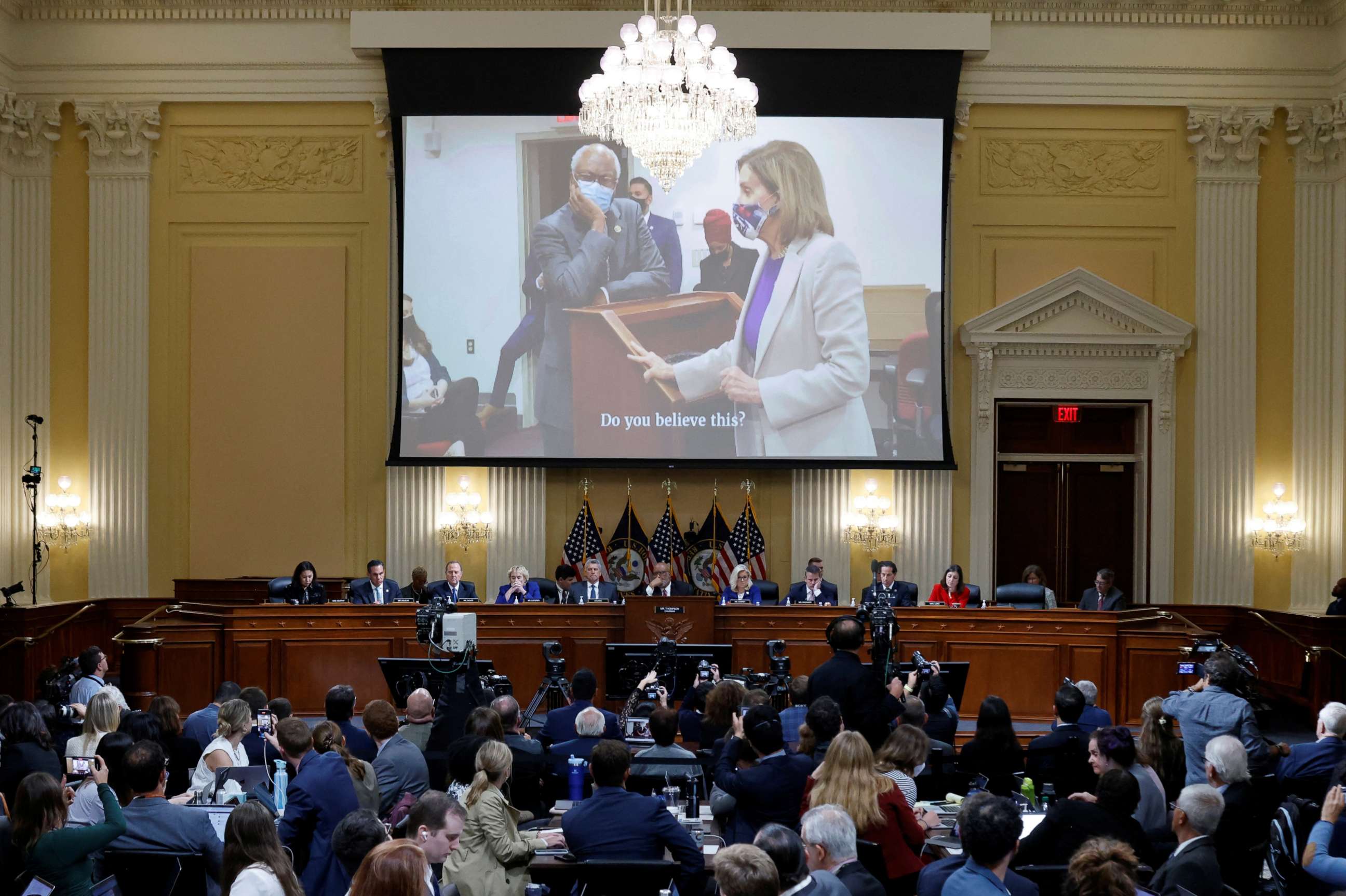
After going to another location, Pelosi was seen engaging in a bipartisan to quell the violence, huddled with Senate Majority Leader Chuck Schumer and Senate Minority Leader Mitch McConnell.
At one point, Pelosi was on the phone with Pence, telling him the group was "trying to figure out how we can get this job done today."




